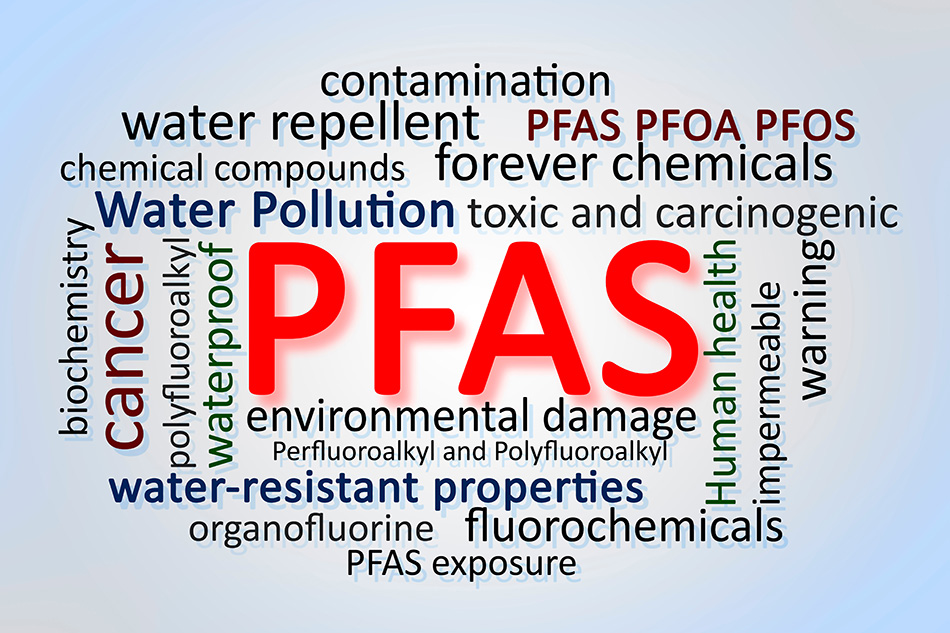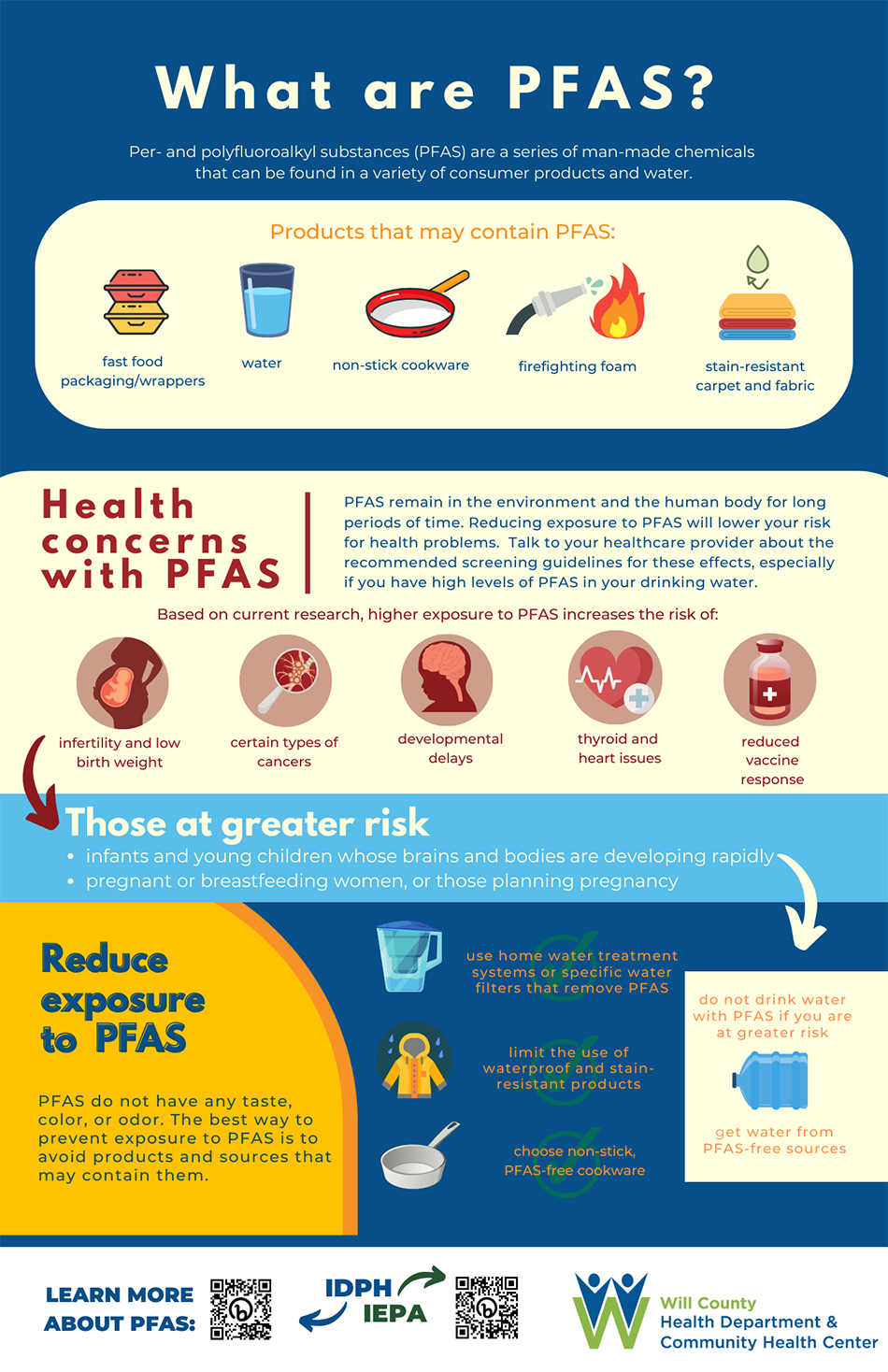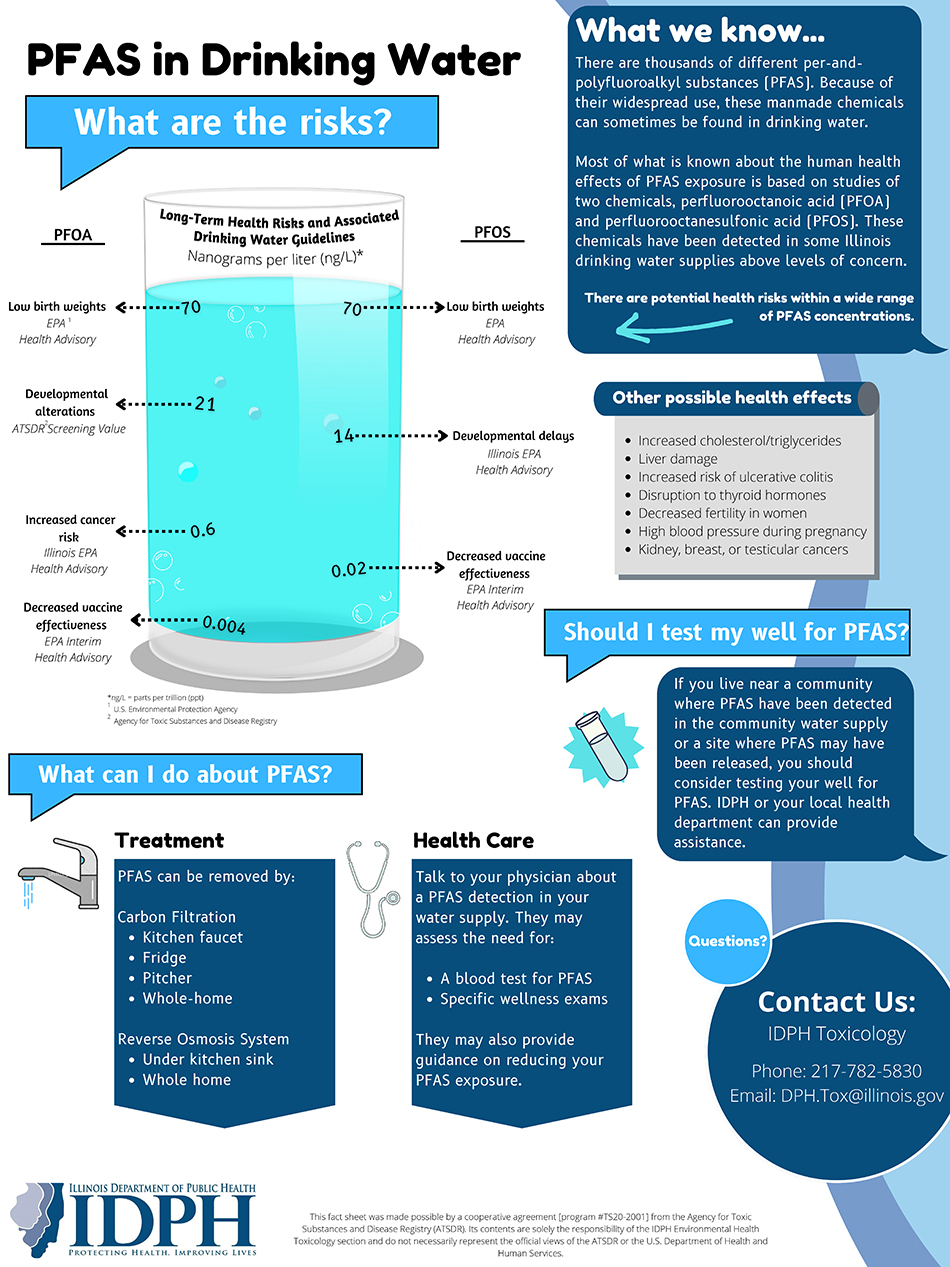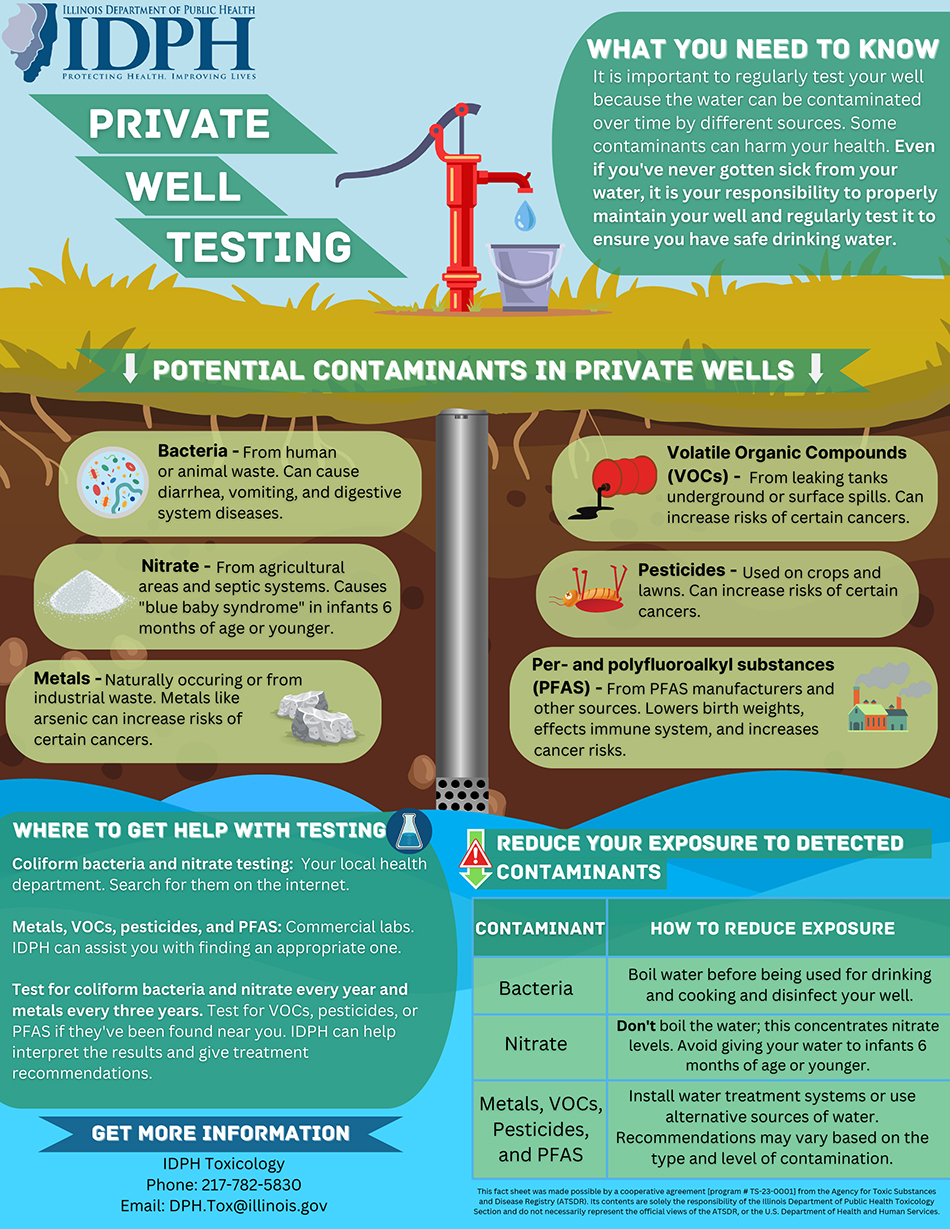PFAS INFORMATION
Per- and polyfluoroalkyl substances (PFAS) are a series of man-made chemicals that can be found in a variety of consumer products and water.

What are PFAS?
Per- and polyfluoroalkyl substances (PFAS)are a series of man-made chemicals that can be found in a variety of consumer products and water. All residents should try and reduce your exposure to PFAS.
Where are PFAS found?
PFAS are found in fast food packaging, water, non-stick cookware, firefighting foam and stain-resistant carpet and fabric.
What are the health impacts of PFAS?
PFAS remain in the environment and the human body for long periods of time. Reducing exposure to PFAS will lower your risk for health problems. Talk to your healthcare provider about the recommended screening guidelines for these effects, especially if you have high levels of PFAS in your drinking water.
Based on current research, higher exposure to PFAS increases the risk of:
- Infertility and low birth weight
- Certain types of cancers, including kidney and testicular cancers.
- Developmental delays
- Thyroid and heart issues
- Reduced vaccine response
- Increased cholesterol levels
- Changes in liver enzymes
Who’s at a greater risk?
Infants and young children whose brains and bodies are developing rapidly and pregnant or breastfeeding women (or those planning pregnancy) are at a greater risk to higher exposure to PFAS.
Those with a greater risk should not drink water with PFAS and instead get water from PFAS-free sources
How to reduce your exposure to PFAS from Water Supply?
1. Use city water
2. Get a carbon water filter or home water treatment system.
3. Test your water if you use a well that is not on city water.
Reduce your exposure to PFAS
PFAS do not have any taste, color, or odor. The best way to prevent exposure to PFAS is to avoid products and sources that may contain them.
- Use home water treatment systems or specific water filters that remove PFAS
- Limit the use of waterproof and stain-resistant products
- Choose non-stick, PFAS-free cookware
Are there PFAS in Will County?
PFAS have been detected in certain parts of Will County. In 2020, the Illinois Environmental Protection Agency (IEPA) began testing all Illinois water supplies to determine the prevalence and magnitude of PFAS in drinking water. Though private wells and non-community water supplies were not part of statewide testing, nearby community water supply test results may indicate a potential for private well and non-community water supply contamination. Community water supply test results can be found on IEPA’s Drinking Water Watch or PFAS Interactive Dashboard and Map websites. If you live near a community where PFAS have been detected in the community water supply or a site where PFAS may have been released, you may contact the Illinois Department of Public Health (IDPH) for assistance in conducting your own testing.
Well Testing Information
It is important to regularly test your well because the water can be contaminated over time by different sources. Even if you’ve never gotten sick from your water, it is your responsibility to properly maintain your well and regularly test it to ensure you have safe drinking water.
- Note: The Will County Health Department’s Environmental Health Laboratory can test for bacteria and nitrate well also testing chlorine, fluoride and hardness. The Will County Health Department’s Environmental Health Laboratory cannot test for PFAS.
- Commercial labs also test well water, and might be the only option for detecting certain contaminants, including PFAS. The Illinois Department of Public Health (IDPH) can help you select the right lab. Contact IDPH at 217-782-5830.
- Testing for contaminants can be expensive. IDPH can help interpret test results and provide appropriate recommendations for free. IDPH cannot require you to test your well, install treatment, or keep you from using your well.
What resources are available?
- The Illinois Department of Public Health (IDPH) PFAS
- Download the CDC PFAS factsheet
- Download the IDPH PFAS factsheet in English or Spanish



